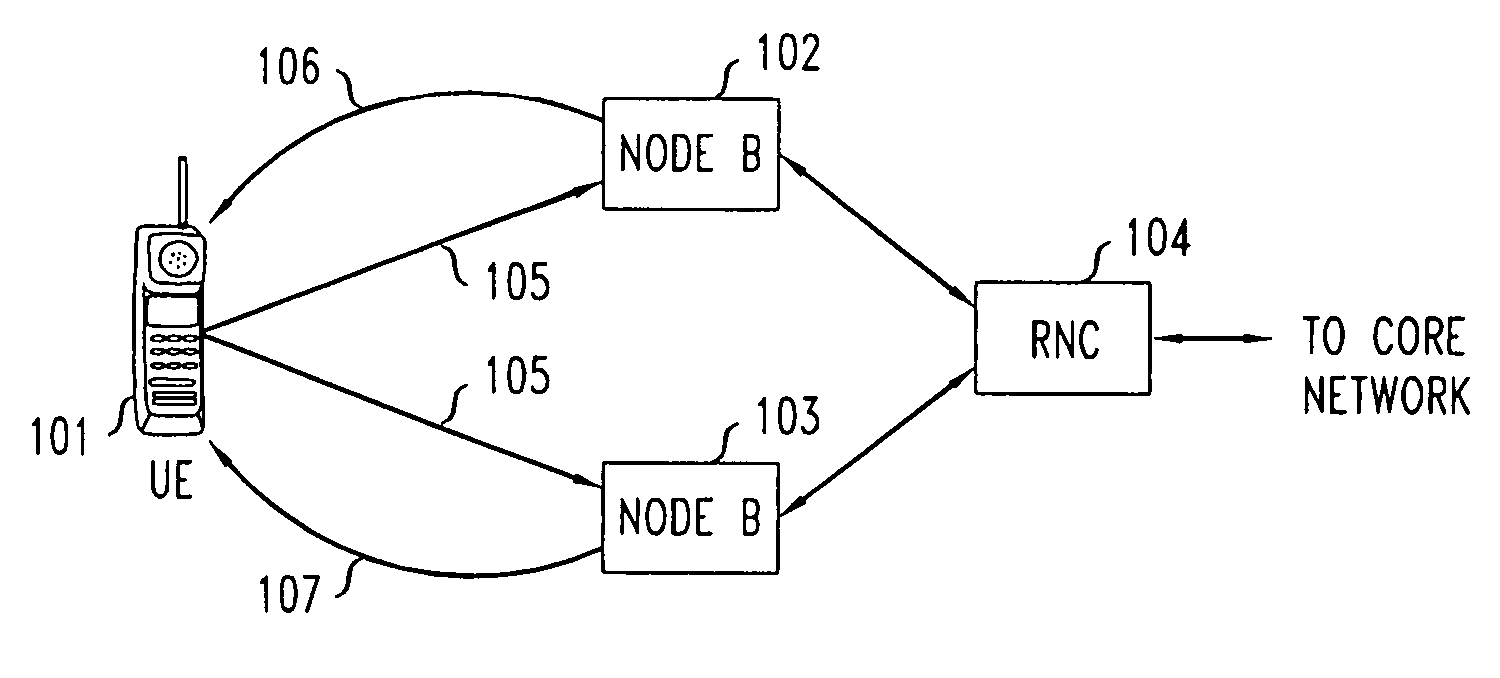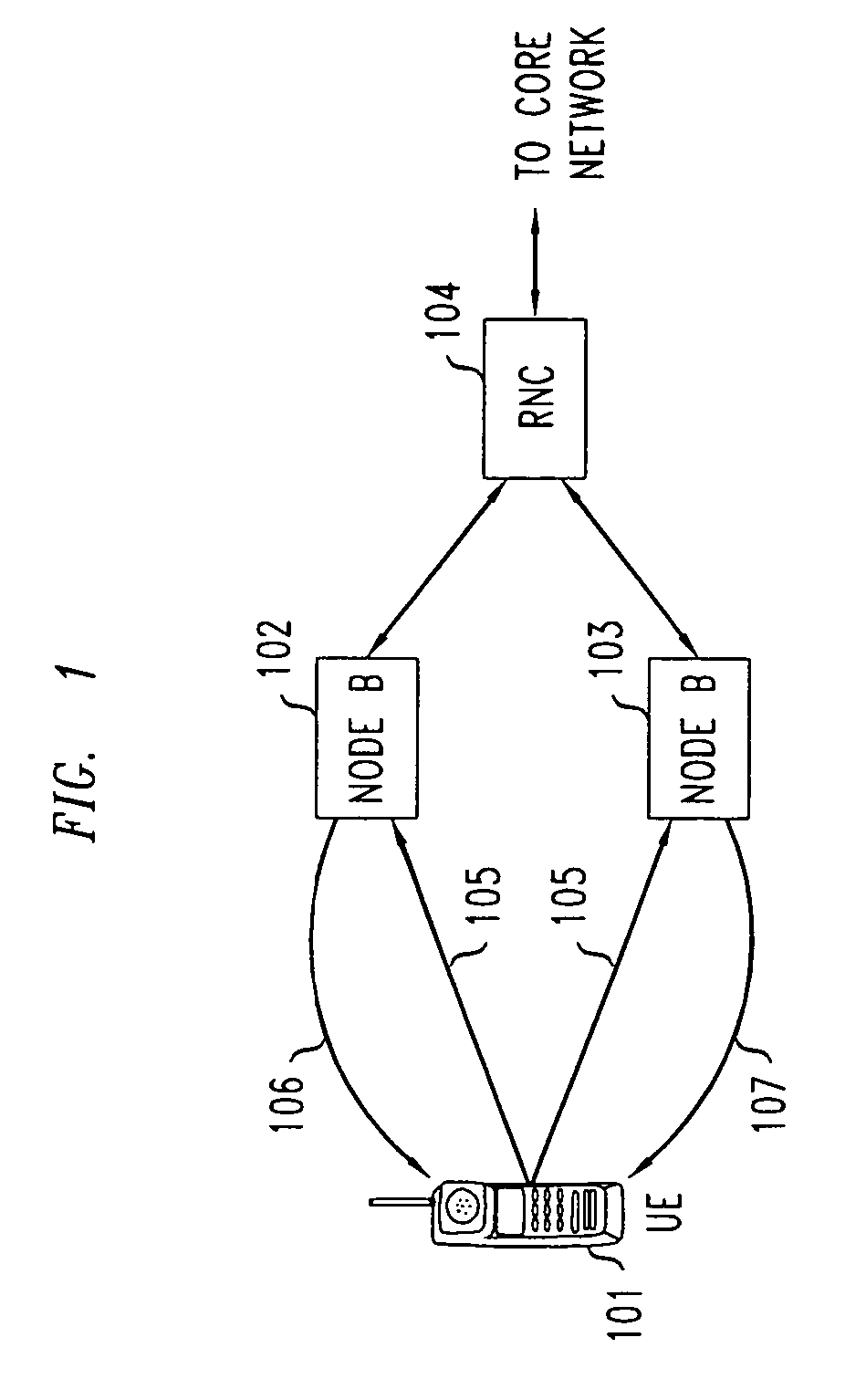Method of increasing the capacity of enhanced data channel on uplink in a wireless communications system
a wireless communications system and enhanced data technology, applied in the field of wireless communications, can solve the problems of reducing the overall capacity of the reverse channel, unable to predict whether the ue will send a new transmission of another frame, and often assigning low data rates, so as to achieve the effect of greatly increasing the capacity of applications using the enhanced uplink data channel and significantly reducing the power of the e-dpcch
- Summary
- Abstract
- Description
- Claims
- Application Information
AI Technical Summary
Benefits of technology
Problems solved by technology
Method used
Image
Examples
Embodiment Construction
[0017]With reference to FIG. 1, UE 101 is shown communicating on the enhanced data channel in a soft handoff situation with both NodeB 102 and NodeB 103. NodeB 102 and NodeB 103 are illustratively shown connected to the same multi-NodeB (or multi-base station) controller 104, referred to herein and in UMTS terminology as an RNC (Radio Network Controller). For clarity purposes, connections of RNC 104 to the core network are not shown, but are understood to exist by those skilled in the art. The transmissions labeled 105 indicate that UE 101 is sending a frame on the uplink through E-DPDCH and E-DPCCH to NodeBs 102 and 103. Both NodeBs 102 and 103 independently attempt to decode the E-DPDCH and E-DPCCH transmissions. If the E-DPDCH frame is successfully decoded by either NodeB 102 or NodeB 103, the NodeB that decodes the frame sends a positive acknowledgment (ACK) to UE 101 by either transmission 106 from NodeB 102 or transmission 107 from NodeB 103. If UE 101 receives an ACK from eit...
PUM
 Login to View More
Login to View More Abstract
Description
Claims
Application Information
 Login to View More
Login to View More - R&D
- Intellectual Property
- Life Sciences
- Materials
- Tech Scout
- Unparalleled Data Quality
- Higher Quality Content
- 60% Fewer Hallucinations
Browse by: Latest US Patents, China's latest patents, Technical Efficacy Thesaurus, Application Domain, Technology Topic, Popular Technical Reports.
© 2025 PatSnap. All rights reserved.Legal|Privacy policy|Modern Slavery Act Transparency Statement|Sitemap|About US| Contact US: help@patsnap.com



